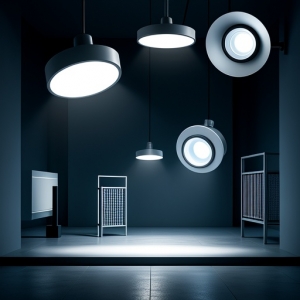Article Title: Insights into the Commercial Lighting Market: Current Landscape and Future Trajectories
The commercial lighting market, a vital segment within the broader lighting industry, plays a pivotal role in illuminating businesses, industries, and public spaces worldwide. As we delve into the intricacies of this dynamic sector, it becomes evident that understanding its current status and anticipating future trends are crucial for stakeholders ranging from manufacturers to end-users.
Current State of the Commercial Lighting Market
In recent years, the commercial lighting market has witnessed significant transformations driven primarily by advancements in technology and increasing emphasis on sustainability. LED lighting, once a niche product, now dominates the market due to its unparalleled energy efficiency, long lifespan, and versatility in design. This shift has not only reduced electricity costs for businesses but also contributed to global efforts in carbon reduction.
Despite the widespread adoption of LEDs, the market continues to evolve with innovations such as smart lighting systems. These systems integrate connectivity features like Wi-Fi or Bluetooth, enabling remote control, scheduling, and adaptive lighting scenarios based on occupancy and daylight availability. Smart lighting is particularly appealing in commercial settings where energy savings and operational efficiency are paramount.
Moreover, the push for green building certifications, such as LEED and WELL, has further accelerated the demand for environmentally friendly lighting solutions. Businesses aiming to minimize their environmental footprint while enhancing workplace aesthetics and functionality are increasingly turning to sustainable lighting options.
Future Trends Shaping the Commercial Lighting Market
Looking ahead, several key trends are poised to shape the future of the commercial lighting market:
1. Advancements in LED Technology: Ongoing research and development promise even more efficient and higher-performing LEDs. Innovations in color rendering, flicker-free operation, and miniaturization will expand application possibilities and user preferences.
2. Integration of Internet of Things (IoT): The convergence of lighting with IoT technologies will unlock new levels of intelligence and automation. Predictive maintenance, data analytics for energy optimization, and integration with building management systems are just a few examples of how IoT will enhance commercial lighting.
3. Human-Centric Lighting: Recognizing the impact of light on human health and well-being, there's a growing focus on human-centric lighting designs. These simulate natural daylight patterns, adjusting color temperature and intensity throughout the day to improve circadian rhythm alignment, productivity, and mood.
4. Sustainability and Circular Economy: As environmental concerns mount, the industry will emphasize recyclability and the use of eco-friendly materials. Circular economy principles will drive innovations in product design, packaging, and end-of-life recycling programs.
5. Cost-Effectiveness and Financing Solutions: While initial investment in advanced lighting technologies can be high, evolving financing models and incentives will make them more accessible. Energy service companies (ESCOs) and performance contracting arrangements are expected to gain traction, allowing businesses to upgrade their lighting without upfront capital expenditure.
Conclusion
The commercial lighting market stands at a fascinating crossroads, characterized by rapid technological progress and a heightened awareness of sustainability. As LED technology matures and smart lighting systems become more sophisticated, businesses can expect improved efficiency, reduced costs, and enhanced environments. However, staying abreast of emerging trends and strategically planning for future needs will be essential for companies looking to thrive in this competitive landscape. By embracing innovation, prioritizing sustainability, and leveraging smart technologies, the commercial lighting sector is set to illuminate a brighter, more efficient future.





















